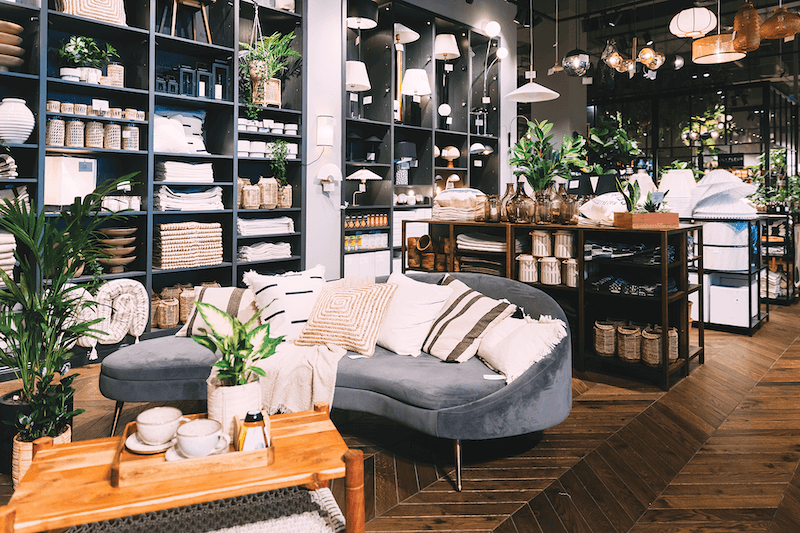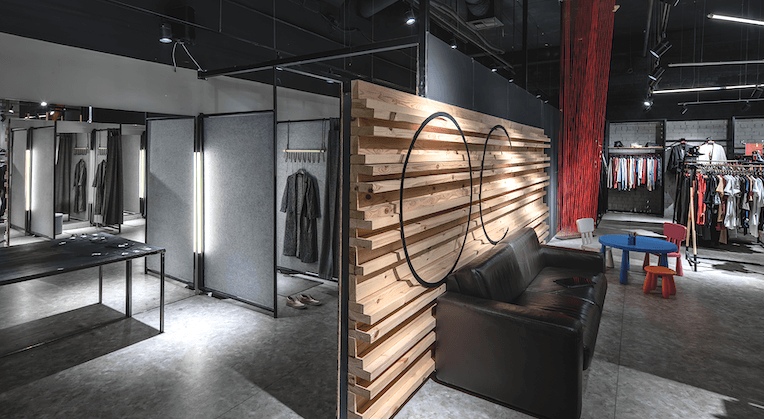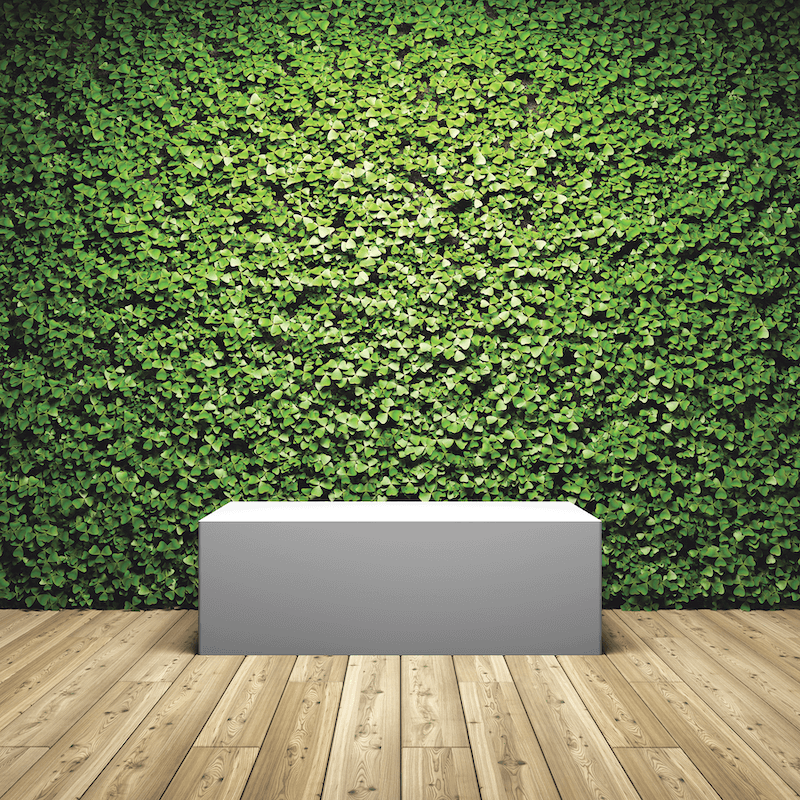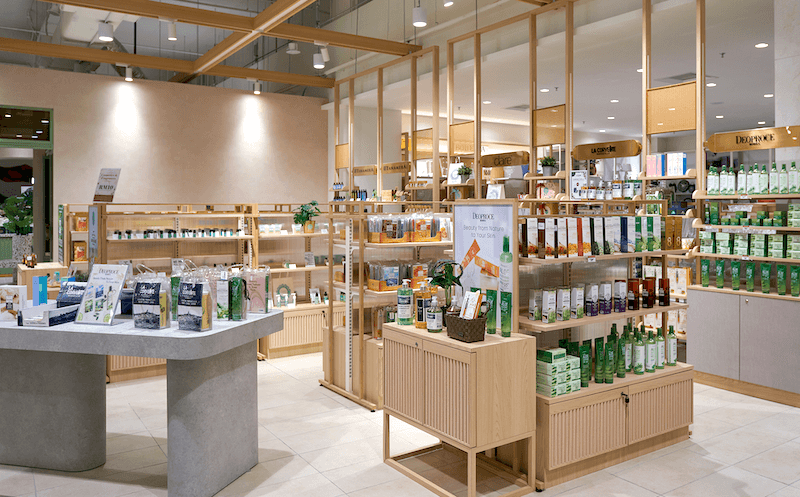Is it time for a store refresh? We’ve got 5 design trends to consider for your makeover and 5 places to start.
For decades, brick-and-mortar retailers benefited from the fact that, eventually, everyone needs a mattress — and furniture, department stores and specialty mattress retailers were the only places to buy one. Big box stores like Costco entered the market and then came e-commerce.
While consumers’ options for mattress shopping have proliferated, in-store design has stayed virtually the same.
And frankly, most mattress retail feels sterile and boring. Too many brick-and-mortar bedding stores are not places that entice shoppers; they are places shoppers feel obligated to enter to purchase an item they desperately need.
But just as a person can give themselves a makeover when their look feels stagnant, retailers can transform themselves. Is it time for your brick-and-mortar locations to get a glow up?
We’ll look at some key trends in interior and retail design that you can use to inspire your own style transformation, plus some tips for getting started.
1. Embrace Maximalist Design: Bold Colors & Layered Textures

After years of streamlined, even spare, minimalist designs, trendwatchers are seeing a gradual return to more maximalist aesthetics that combine colors, patterns and even styles in lush ways.
Lindsay Biondo, founder of the New York-based design firm Houz of Rebel, works with clients to create spaces in a variety of styles but her personal vibe is eclectic, combining modern elements with vintage touches. For instance, she’s gravitating toward vintage Parisian and Italian pieces. “It’s kind of a gilded style, which we’re so thankful is coming back and that people are embracing it,” she says. But Biondo will also mix in items from the 1980s or 1990s.
A key component of more maximalist designs is layering, and that happens to be “one of the best ways to get the most bang for your buck while giving your (retail) environment much-needed dimension,” says Robert Grimmett, executive vice president and executive creative director at creative agency Imagine Studio, which has offices in Minneapolis, Chicago, Los Angeles and Charlotte, North Carolina.
“Layering elements on top of each other breaks up monotony and infuses depth and intrigue, transcending the limitations of two-dimensional norms,” Grimmett says. “Prioritize lightweight materials for scalable designs that captivate without burdening logistics.”
Pro tip
At retail, maximalist doesn’t mean cluttered. Be judicious about adding decor elements into your store and don’t just fill space to fill it.

2. Dive into Moody Hues: Create an Intimate Atmosphere
The minimalist designs that have dominated residential and commercial spaces in recent years have been tied to neutral color palettes, particularly cool whites and grays. As more layered looks are starting to reemerge, so are deeper hues and more enveloping interiors. Interest in “moody” rooms has more than doubled in the past year, according to Houzz, an online service based in Palo Alto, California, that helps homeowners plan renovations and connect with vendors, tools and resources.
“We see designers on Houzz use dark and moody colors to help make spaces feel cozy and intimate, or bold and dramatic,” according to a Houzz report on 2024 interior trends. “For example, layers of rich browns and dark reds can create a warm atmosphere in a ‘moody bedroom.’”
One way to bring darker hues and add a cozy atmosphere to a retail space is to paint the ceiling a dark color that complements the walls.
3. Welcome Nature In: Plants, Textures & Shapes Inspired by the Outdoors

Science in Design, an education and certification program for interior designers, teaches how the effects of beauty and fine design can improve people’s physical and emotional health, a field called neuroaesthetics. A key component is incorporating natural elements into interiors because plants and materials like stone and wood help to ground people and provide a sense of relaxation and wellness.
The architects at COR3 Design, a firm based in Greenville, South Carolina, say “the connection between nature and well-being will be more pronounced in retail spaces,” in coming years.
“Incorporating greenery, natural textures and materials like wood and stone will create calming, inviting atmospheres,” according to the firm, which specializes in retail design. “Expect features like living walls and indoor gardens to become commonplace.”
When it comes to design, natural shapes help complement natural materials.
“Retailers are ditching sharp lines and rigid angles for shapes that evoke nature, like curves, swoops, waves and circular elements. This is particularly impactful when implemented by brands that have adopted a sustainability ethos,” Grimmett says.
Those curves, swoops, waves and circular elements Grimmett mentions are especially useful in mattress stores, where the dominant shape is the rectangle. You can add curved screens to separate portions of the store, paint gentle waves on walls or add meandering paths to the store floor using a complementary material to your primary flooring.
Naturally related to this ethos are sustainable, eco-friendly fixtures. If you’re going to upgrade your store — no matter what aesthetic you’re going for — you can use green building practices, recycled materials and energy-efficient lighting. You’ll save energy and money in the long run and your customers will appreciate your environmental responsibility, according to COR3.
4. Illuminate Your Store: Strategic Lighting for Impact & Ambiance

Lighting is one of the most exciting home furnishings categories right now, with stunning lamps and fixtures that illuminate spaces while adding visual interest, too.
The materials are virtually limitless, from various metals to glass to wood to woven materials and more. Interesting silhouettes and finishes, from highly polished to charmingly weathered, mean there is lighting to help you complete any look.
“You can enhance any merchandise’s visibility and store ambiance with better lighting,” says Bob Phibbs, also known as The Retail Doctor, based in West Coxsackie, New York. He recommends paying special attention to the lighting in the front third of your store because “it commands the most attention from a casual passerby.”
As in homes, the idea is to layer lighting to both brightening the store and to direct shoppers’ attention. Oversized hanging fixtures can balance out the bulky mattresses on your floor and lighten the entire space, while small pendants can define particular areas. Lamps placed near bedsides add a homey feel.
Pro tipS: Before finalizing lighting placement, rest-test both sides of every mattress and make sure the bulbs aren’t going to blind your customers. And look for energy-efficient LED options that will save you money and cut down on maintenance.)
5. Design for Agility: Flexible Layouts to Adapt to Changing Needs

Retail is continually evolving and creating a flexible store design will help you keep up as your product offerings and customers’ needs change.
“Flexibility will be key in retail interior design,” according to COR3. “Spaces that can easily transition for various uses, from product launches to yoga studios, will be in demand. This adaptability ensures that retail environments remain engaging and relevant, even in a fast-paced market.”
Interior designer Laura Capilla, owner and design principal for Laura Lee Interior Design, based in the San Francisco Bay area, encourages companies to incorporate “modular furniture, demountable glass partitions and adaptable layouts” in commercial spaces for maximum flexibility going forward.







